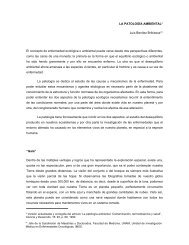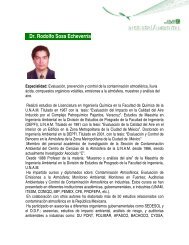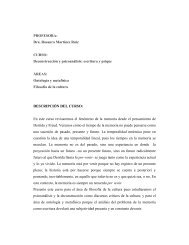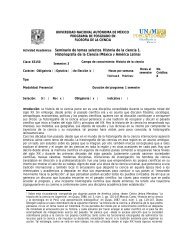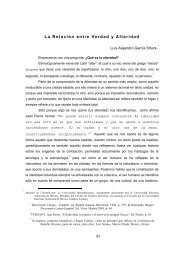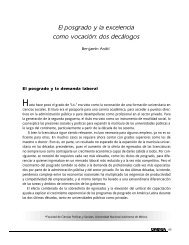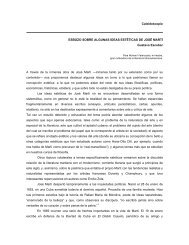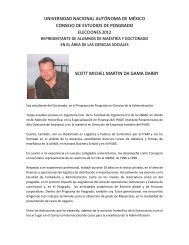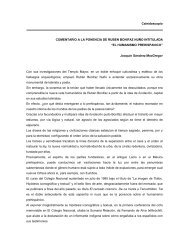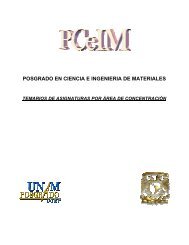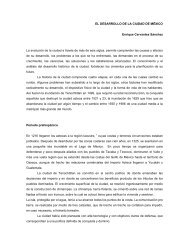Review: Resisting the Ninth Author(s): Richard Taruskin Reviewed ...
Review: Resisting the Ninth Author(s): Richard Taruskin Reviewed ...
Review: Resisting the Ninth Author(s): Richard Taruskin Reviewed ...
Create successful ePaper yourself
Turn your PDF publications into a flip-book with our unique Google optimized e-Paper software.
poco lento<br />
?mr<br />
poco accelerando<br />
. I - I I _<br />
r<br />
Tempo I<br />
l<br />
i<br />
PERFORMERS &<br />
INSTRUMENTS<br />
'<br />
cresc<br />
'<br />
'1t { '1 T r r<br />
t<br />
L 5<br />
len to<br />
r e cresc. P<br />
cresc. ed accelerando poco<br />
eE' . tf,___-^b ,___ __ i^"t<br />
J -;<br />
9',1. J J [<br />
Example 1 (after Schindler)<br />
-<br />
t! m ow<br />
J<br />
'<br />
markably slow tempo at which he begins <strong>the</strong><br />
Alla Marcia variation to govern all <strong>the</strong> 264 measures<br />
that ensue before Beethoven's next metronomic<br />
indication-a span that takes in <strong>the</strong><br />
whole fugal development and <strong>the</strong> radiant choral<br />
recapitulation in D major. True enough, <strong>the</strong><br />
"tempo of feeling" ineluctably pulls him along<br />
a little as <strong>the</strong> music progresses, but his effort to<br />
restrain it is quite annoyingly audible. I'll wager<br />
he would agree with me that Beethoven's tempo<br />
for <strong>the</strong> Alla Marcia-a good ten points, actually,<br />
below <strong>the</strong> tempo Norrington actually<br />
adopts-was meant to apply only to <strong>the</strong> pokey<br />
start in <strong>the</strong> bassoons and big drum, if it applies<br />
to anything at all;4 that by <strong>the</strong> time <strong>the</strong> tenor en-<br />
4This tempo has been questioned by many-even Norrington,<br />
by implication, when he told a Gramophone interviewer<br />
that "<strong>the</strong> only really suspect [metronome] marks occur<br />
in <strong>the</strong> <strong>Ninth</strong>. Beethoven made his metronome markings<br />
for all <strong>the</strong> symphonies soon after writing <strong>the</strong> <strong>Ninth</strong> [actually<br />
in 1817, <strong>the</strong> year in which he made his first sketches for his<br />
ters, <strong>the</strong> tempo should have revved up considerably;<br />
and that <strong>the</strong> clear intention of <strong>the</strong> whole<br />
264-bar stretch is to portray a mounting waveor<br />
better, a spreading infection-of Elysian delirium.<br />
But, child of <strong>the</strong> twentieth century that<br />
he is, Norrington is suspicious of what Ortega y<br />
Gasset called an art that "proceed[s] by psychic<br />
contagion, for psychic contagion is an unconscious<br />
phenomenon, and art ought to be full<br />
clarity, high noon of <strong>the</strong> intellect." In its effort<br />
last symphony], and he obviously knew <strong>the</strong> first eight ra<strong>the</strong>r<br />
better than he knew <strong>the</strong> <strong>Ninth</strong>" ("The Symphony as Opera?"<br />
The Gramophone 44 [1987], 1222). Even though inaccurate<br />
in its historical details, this statement seems very<br />
sensible to me, and it applies above all to <strong>the</strong> tempo of <strong>the</strong><br />
Alla Marcia variation. It has even been suggested (by Hermann<br />
Beck) that <strong>the</strong> metronome setting was meant to refer<br />
to <strong>the</strong> dotted half note, not <strong>the</strong> dotted quarter, which would<br />
exactly double <strong>the</strong> tempo to which Norrington adheres with<br />
such determination. Toscanini, on <strong>the</strong> evidence of his NBC<br />
Symphony recording, seems to have shared Beck's opinion.<br />
255



